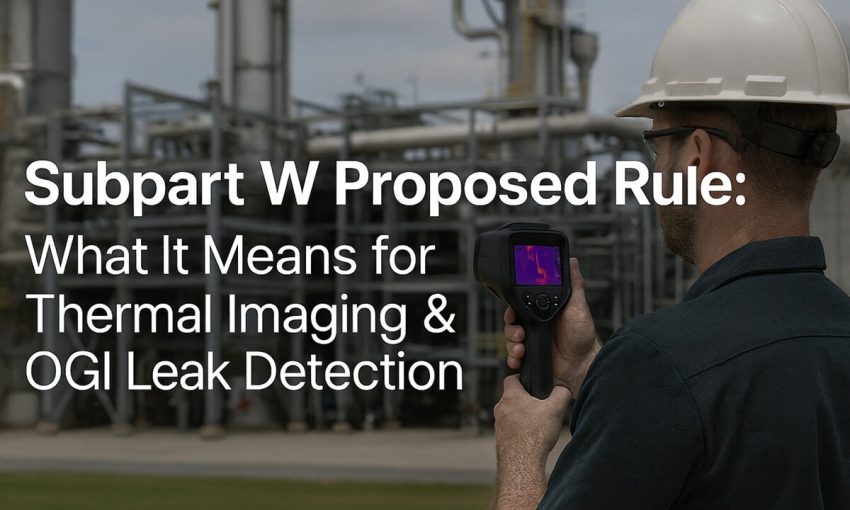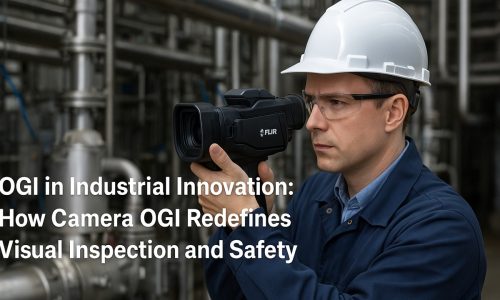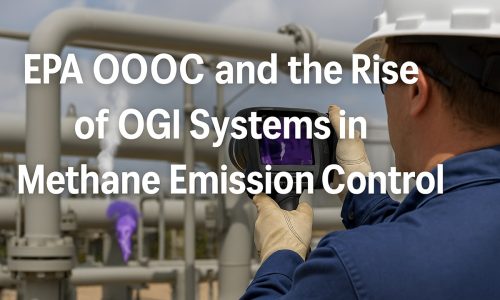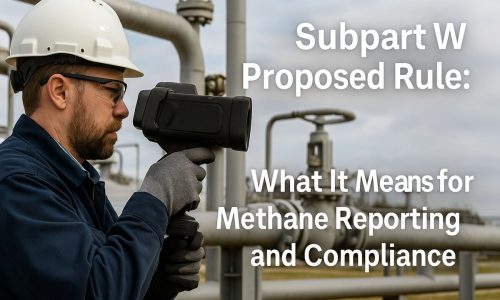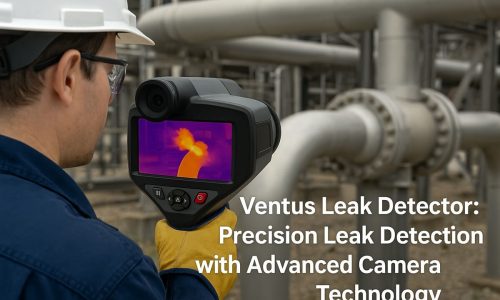Introduction: Regulation Meets Innovation
Methane emissions are one of the most pressing challenges in today’s energy and industrial landscape. Invisible to the naked eye, these leaks not only waste valuable product but also drive significant greenhouse gas emissions with major climate impacts. For years, reporting programs relied heavily on emission factors and engineering calculations, which often underestimated the true scale of the problem.
The EPA’s Subpart W Proposed Rule is a turning point. By requiring operators to adopt measurement-based monitoring and expand the scope of emissions reporting, the rule sets a new standard for accountability. This shift creates both compliance obligations and an opportunity: integrating advanced tools like thermal imaging and Optical Gas Imaging (OGI) to detect invisible leaks faster, more accurately, and more safely than ever before. For OPGAL, whose solutions have been field-proven across oil & gas, petrochemicals, and power generation, the rule underscores the critical role of innovation in regulatory compliance and environmental responsibility.
Moving from Estimates to Empirical Measurement
Traditional emissions reporting allowed operators to rely on generic emission factors or rough calculations. While simple, these methods were far from precise. They ignored site-specific conditions, equipment variances, and intermittent leaks—leading to underreporting and missed opportunities for improvement.
The Subpart W Proposed Rule requires companies to transition toward empirical, measurement-based data. Instead of asking “what should this equipment emit in theory?”, regulators now demand: “what is this equipment actually emitting in practice?”
This change prioritizes transparency and accuracy. It means that tools capable of direct, on-site leak detection—like OGI and thermal cameras—are no longer optional extras. They are central to compliance strategies.
The Science of Thermal Imaging and OGI
Thermal imaging detects infrared radiation, visualizing heat differences that indicate leaks or anomalies in pipelines, tanks, and processing equipment. Even slight variations in temperature can reveal where hydrocarbons are escaping, long before human senses or conventional sensors would notice.
Optical Gas Imaging (OGI) takes detection further. Using spectral filters, OGI cameras make invisible gases—like methane, sulfur hexafluoride (SF₆), and volatile organic compounds—visible as vapor-like plumes. Inspectors can pinpoint leaks in real time, without contact and without shutting down equipment.
Together, thermal imaging and OGI empower operators to achieve compliance while improving safety and efficiency. Instead of relying on models or estimates, companies capture visual, empirical evidence that withstands regulatory scrutiny.
Detecting Leaks Faster Than Conventional Tools
Traditional leak detection methods—such as fixed-point gas sensors or handheld detectors—have significant limitations. Fixed sensors only detect leaks when gas reaches the sensor in sufficient concentration, which means small or intermittent leaks are often missed. Manual inspections can be time-consuming, inconsistent, and risky for personnel.
By contrast, thermal and OGI technologies deliver:
-
Wide-area coverage – Inspect entire facilities, from pipelines to compressor stations, in minutes.
-
Real-time visualization – See leaks instantly as they occur.
-
Non-contact safety – Detect emissions from a safe distance, keeping teams out of hazardous zones.
-
Flexible deployment – Handheld, drone-mounted, or fixed installations adapt to any site.
The result is faster detection, better accuracy, and reduced operational risk. Instead of waiting for alarms or costly downtime, operators gain proactive control over leak management.
Preventing Accidents, Downtime, and Fines
Methane leaks are not just an environmental issue—they are a business liability. Explosive gases can lead to catastrophic accidents, while toxic VOCs pose health risks to workers and surrounding communities. Beyond safety, unreported leaks may result in heavy fines, regulatory penalties, and reputational damage.
The financial stakes are also high. Every cubic meter of leaked gas is lost product—revenue quite literally evaporating into the air. Add to that the cost of unplanned downtime if small leaks escalate into major failures, and the case for early detection becomes obvious.
With Subpart W pushing operators to identify and measure leaks more rigorously, OPGAL’s thermal and OGI cameras enable compliance while simultaneously protecting assets, workers, and bottom lines.
Benefits Beyond Compliance
Adopting advanced leak detection technologies in response to Subpart W creates strategic advantages:
-
Regulatory Readiness – Operators using OGI and thermal imaging meet the new measurement-based requirements with confidence.
-
Cost Efficiency – Early detection reduces product loss, downtime, and rework.
-
Sustainability Impact – Verified methane reductions strengthen ESG reporting and environmental credibility.
-
Operational Insight – Data from imaging inspections informs predictive maintenance, enabling smarter resource allocation.
Rather than viewing compliance as a burden, companies can leverage it to unlock efficiency, sustainability, and competitive differentiation.
Why OPGAL Solutions Stand Out
OPGAL has been at the forefront of thermal imaging and OGI innovation for decades. Its portfolio covers the full spectrum of leak detection needs, including:
-
Handheld OGI cameras for flexible field inspections.
-
Drone-mounted systems for wide-area surveys in hard-to-reach locations.
-
Fixed monitoring solutions for continuous, automated surveillance of critical assets.
Designed for rugged environments and trusted by leading oil & gas operators worldwide, OPGAL’s systems combine sensitivity, usability, and reliability. With Subpart W increasing the demand for credible, measurement-based reporting, OPGAL provides the tools operators need to stay ahead—delivering compliance, safety, and performance in one package.
Turning Compliance Into Competitive Advantage
The Subpart W Proposed Rule marks a decisive shift in how methane emissions are monitored and reported. It moves the industry beyond estimates and into an era of empirical measurement, transparency, and accountability.
For operators, compliance is no longer just about ticking boxes—it’s about demonstrating responsibility, protecting assets, and safeguarding the environment. For technology leaders like OPGAL, it is an opportunity to show how advanced thermal imaging and OGI make invisible leaks visible, measurable, and preventable.
By adopting OPGAL’s solutions, industries don’t just meet regulatory requirements—they gain a strategic advantage. Faster leak detection, stronger compliance, safer operations, and a proven commitment to sustainability ensure that Subpart W compliance becomes more than an obligation. It becomes a pathway to leadership in safety, efficiency, and environmental stewardship.

